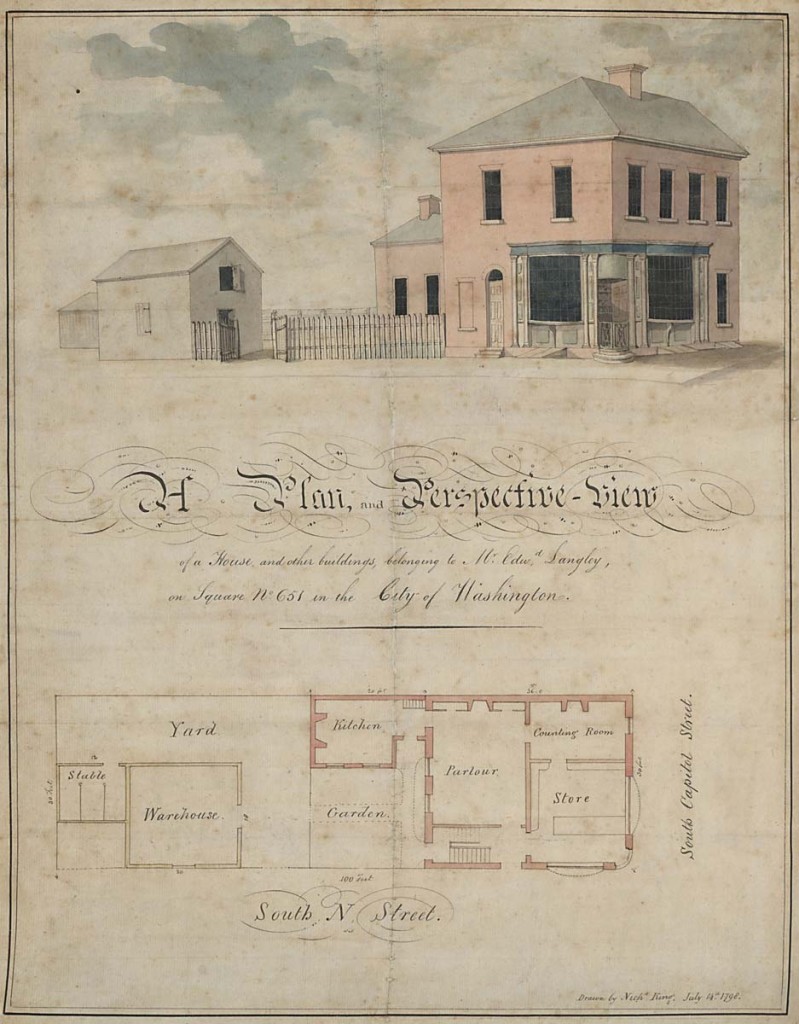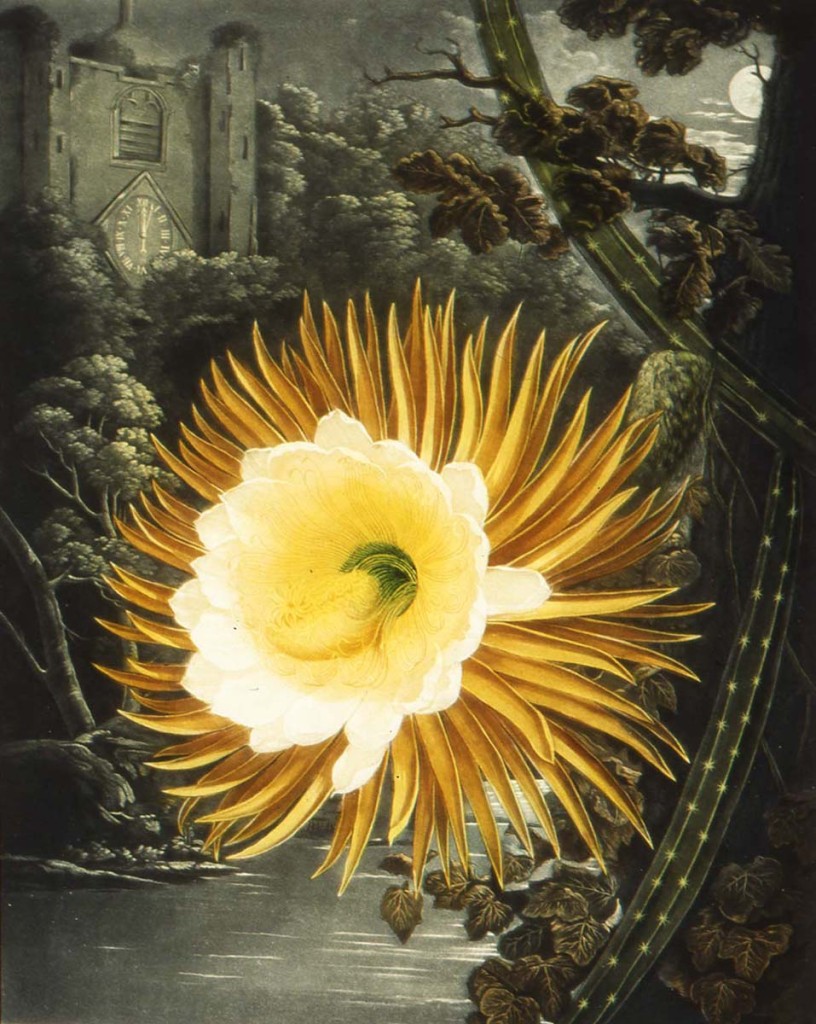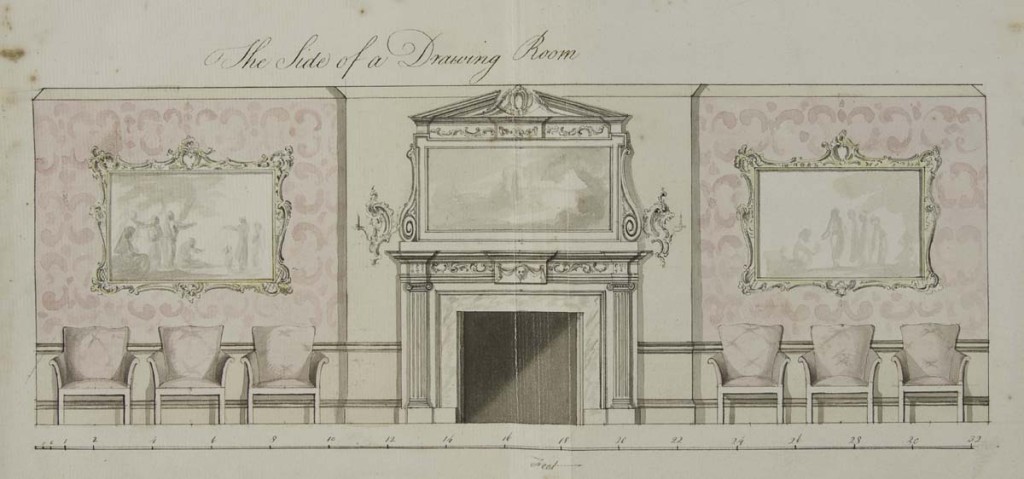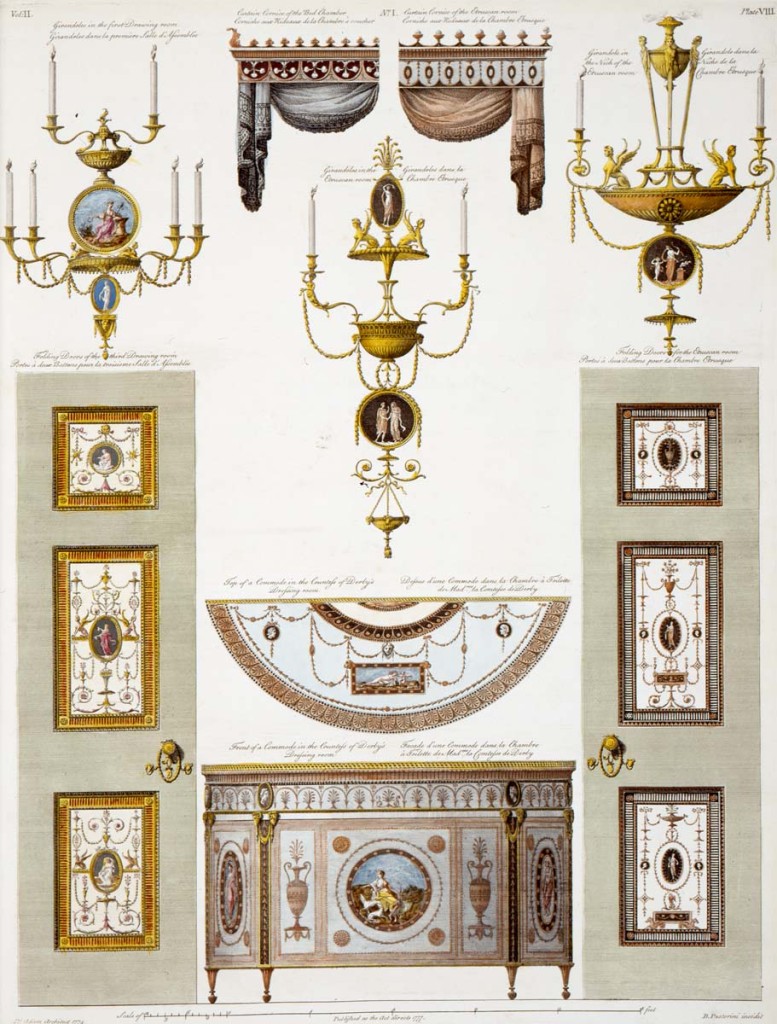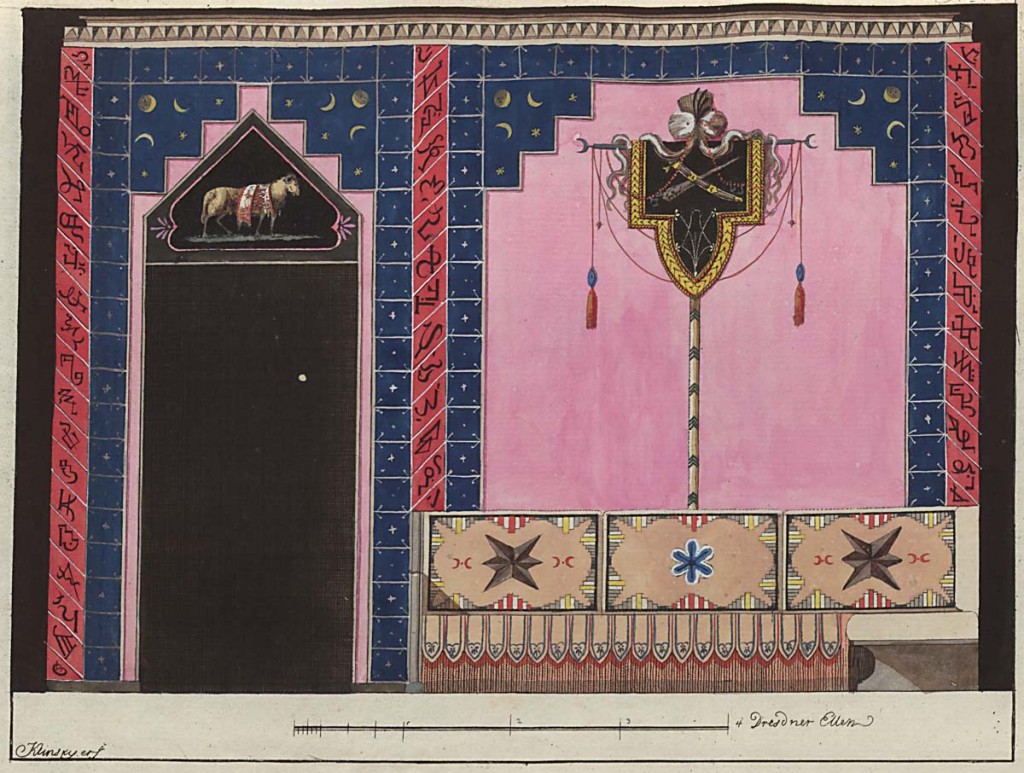A Wealth of Styles and Choices
As tastes have changed over the years, so have designs for both the outside and inside of homes. Library materials help to document those changing styles in landscapes and interiors. Treatises on garden design and architectural plans help us to re-create exteriors, while design manuals, trade catalogues, and fashionable periodicals all illustrate possibilities for interiors.
Designing Outdoor Spaces
Sketches and Hints on Landscape Gardening
By Humphry Repton, printed by W. Bulmer and Co.
London, England; about 1794
Hand-colored aquatint
SB471 R42s* Printed Book and Periodical Collection
A famed British landscape designer, Humphry Repton promoted a naturalistic style of gardening. His publications showed suggestions for improvements with hand-painted “before” and “after” designs for landscapes.
A Plan, and Perspective-View of a House and Other Buildings, Belonging to Mr. Edwd. Langley
Made by Nicholas King
[Washington, D.C.]; 1798
Watercolor
72×5 Downs Collection, gift of Benjamin Ginsburg
Nicholas King worked as a city surveyor and architect in the infant capital city of Washington. He designed this federal dwelling (which is no longer standing) to contain the owner’s business as well as his private living quarters.
The Temple of Flora
By Robert John Thornton, printed by T. Bensley
London, England; 1807
Hand-colored mezzotint
QK92 T51 PFF Printed Book and Periodical Collection, gift of the Friends of Winterthur
The Temple of Flora is considered to be one of the most magnificent botanical works ever produced. Published in the early 1800s, it illustrates botanist Carolus von Linnaeus’s system of classifying plants and identifies many exotic flowers that were available to gardeners at the time.
Awnings: A Guide to Their Selection
By the Otis Company, published by the company
New York, New York; about 1930
NA3008 O88* TC Printed Book and Periodical Collection, gift of Claire W. Nagle
Long before air conditioners, awnings helped to keep homes cool. In this volume, the Otis Company presents a parade of the most popular house styles of the day, discusses their individual architectural personalities, and recommends awning fabrics most suited to each design.
Designing Indoor Spaces
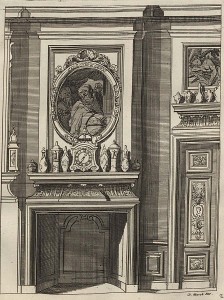 Werken van D. Marot
Werken van D. Marot
By Daniel Marot
Amsterdam, Netherlands; about 1707
Engraving
NK1535 M35* Printed Book and Periodical Collection
Garniture
Made in Jingdezhen, China; about 1695
Porcelain
2000.0061.083.001–.005 Gift of Leo A. and Doris C. Hodroff
Notice the porcelain vases above the mantel in Marot’s illustration. Vases similar to the set shown here from 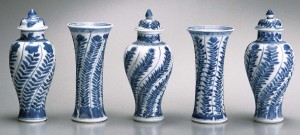 China were exported to Europe for use in elaborate displays. Daniel Marot designed interiors of royal palaces in Holland and England for William III and Queen Mary, including chimneypieces for Queen Mary’s displays of Chinese porcelain.
China were exported to Europe for use in elaborate displays. Daniel Marot designed interiors of royal palaces in Holland and England for William III and Queen Mary, including chimneypieces for Queen Mary’s displays of Chinese porcelain.
The Side of a Drawing Room
Made by William Gomm Jr.
England; about 1761
Watercolor
64×82.1 Downs Collection, gift of the Friends of Winterthur
This charming watercolor design by the English cabinetmaking and upholstery firm of William Gomm & Son & Co. shows high-style furnishings and their placement in a formal drawing room of the period.
The Works in Architecture of Robert & James Adam. v.2, Number 1: Containing Part of the Earl of Derby’s House in Grosvenor-Square
By Robert and James Adam, printed and sold by Peter Elmsley
London, England; 1779
Hand-colored engraving
NA997 A21 v. 2 PF Printed Book and Periodical Collection
The volume seen here documents the design projects that the Scottish-born Adam brothers had completed. With the book, they hoped to demonstrate to future patrons their ability to design furniture, lighting fixtures, and architectural details. The compilation was one of the most influential of its day.
Magasin für Freunde des Guten Geschmacks
Published by Friedrich August Leo
Leipzig, Germany; 1796
Hand-colored engraving
NK1160 M18 Printed Book and Periodical Collection
The periodical Magasin für Freunde offered a menu of design ideas for architects and their clients, including Islamic, Pompeiian, pastoral, and Roman room settings.
Trade Catalogue
By the Belcher Mosaic Glass Company, published by the company
New York, New York; 1886
Hand-colored plate
NK5399 B42 TC Printed Book and Periodical Collection
The Belcher Company created this design when residential stained glass was in vogue. The window appeared at the height of the aesthetic movement, a style that was greatly influenced by the arts of Japan.
Related Themes:


